Inquivix HQ
1-903, 18 Eonju-ro 146-gil,
Gangnam-gu, Seoul, Korea
06057
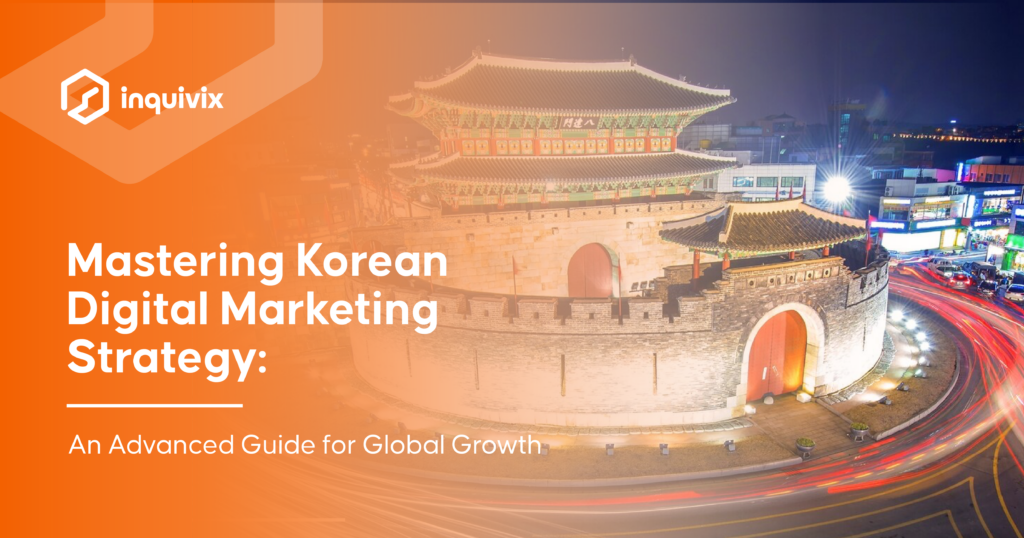
Being a fast-growing and strong economy, South Korea presents plenty of opportunities for businesses to grow. However, understanding how to go about marketing in Korea can be a little challenging. The strategies that worked in other global markets may not work well within the Korean market with its unique digital landscape.
In this blog post, we will delve into the South Korean market. Discover the secrets of digital marketing in Korea. Let’s look at the platforms, examine the intricacies of Korean SEO, discover the impact of K-pop and influencer marketing, and ultimately reveal how to create an effective digital marketing strategy specifically designed for Koreans. We aim to demystify South Korea’s landscape and empower your business for triumph. So let’s get started!
The South Korean Digital Ecosystem: An Overview
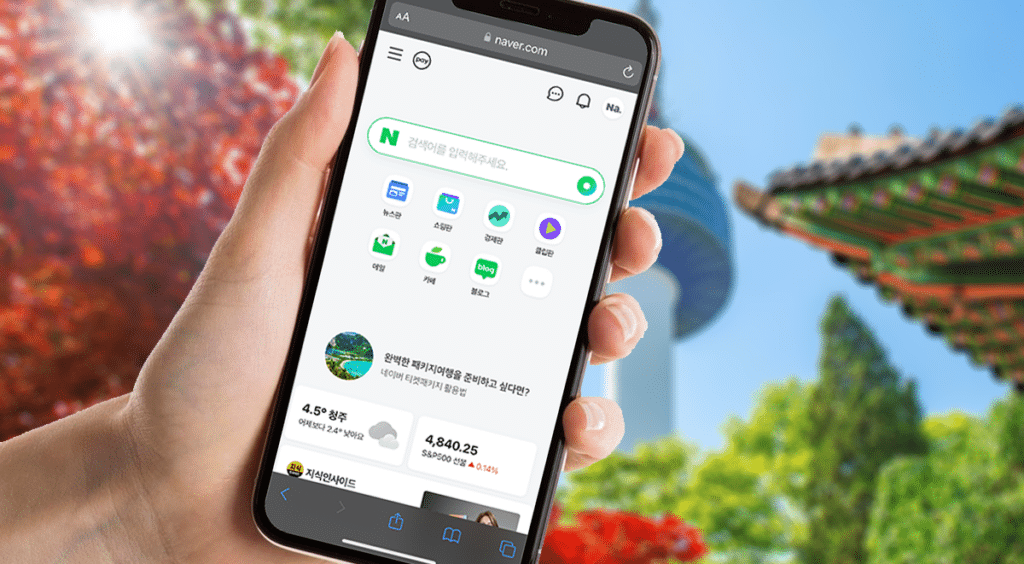
South Korea has a landscape that combines technology, culture, and advanced infrastructure. Being a leader in IT with tech giants like Samsung and LG, South Korea boasts a well-versed population in technology. High-speed internet and widespread broadband access have made South Korea a hotspot for businesses keen on digital marketing in Korea.
Although the fundamental principles of marketing apply universally, South Korea stands out due to its digital ecosystem. Of being dominated by giants like Google and Facebook, homegrown platforms such as Naver, Daum, and KakaoTalk hold the lion’s share of the Korean digital market. This necessitates businesses to tailor their marketing efforts for these platforms.
To succeed in marketing in Korea, it is crucial to understand the intricacies of the space. Factors like the popularity of the social media platform being used, K-pop culture, and the influence of influencers play pivotal roles in shaping digital marketing strategies. Therefore, international companies need to do more than just translate their existing marketing strategies; they must fundamentally reshape them to align with the behavior of South Korean consumers. Reshape them to align with Korean consumers.
Power Players of South Korean Digital Platforms – Naver, Daum, Kakao, Coupang, and TikTok
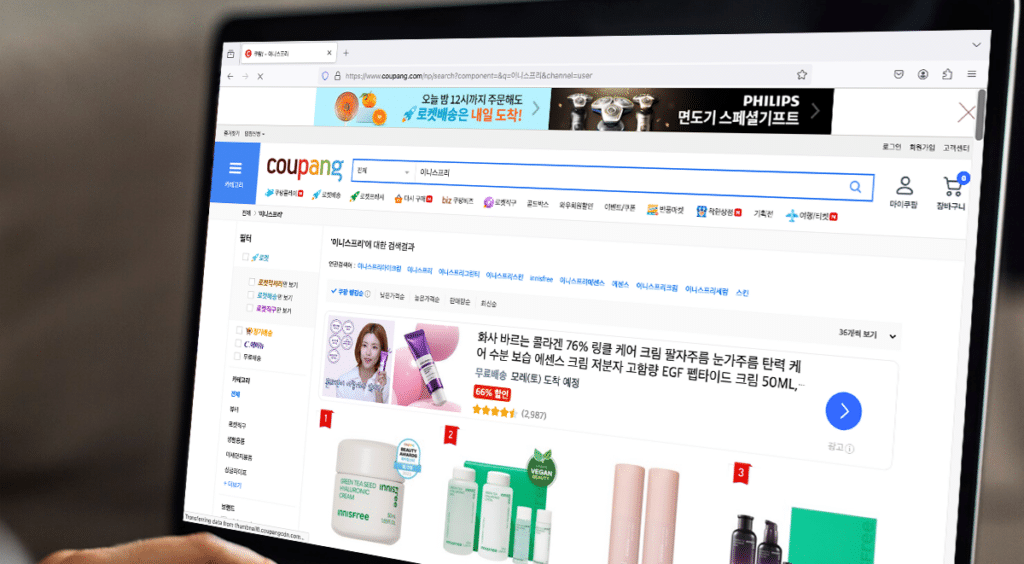
In the captivating landscape of South Korea, local platforms take precedence over giants like Google and Facebook. This shift in dominance presents intrigue and challenges, creating an environment where understanding these local platforms is crucial for successful digital marketing.
Let’s begin by discussing the leading player in the Korean digital market – Naver. With the largest market share among search engines within South Korea, Naver has earned itself the title ‘Google of South Korea.’ However, Naver goes beyond being a search engine by offering integrated services like news, email, and shopping. One notable feature is its platform, which marketers can utilize to reach audiences and enhance their organic search rankings. Yet achieving success on Naver requires comprehending its algorithm and user behavior. Your content should be rich in keywords. It should be aligned with Navers-specific SEO standards to increase visibility on this platform.
Let us move on to Daum, another platform that offers an array of services, including search, news, and email. Although Daum’s market share is smaller than Naver’s, it still holds importance within the digital realm. Especially among the older generations and PC users, Daum still holds its popularity. Daum Café, the blogging platform, is widely loved by people in South Korea as it fosters a community across interest groups. Marketers can take advantage of these communities to run targeted marketing campaigns.
When it comes to shaping marketing strategies, you cannot overlook KakaoTalk. It is the country’s most widely used messaging app. Offering a range of features such as texting, voice calls, and integrated mobile commerce, KakaoTalk has become a one-stop platform for Korean internet users. This makes it an excellent channel for brands to launch advertising campaigns and connect with audiences.
Now we come to Coupang, referred to as the ‘Amazon of South Korea,’ which is a massive e-commerce powerhouse. With millions of users and an extensive product range, Coupang has witnessed growth. Brands with physical products can utilize its platform for sales. Also, it leverages its wide reach to amplify its marketing messages.
In recent years, TikTok, a popular short video platform also known as Douyin in China, has remarkably influenced Korea’s digital landscape. This platform has gained a massive amount of user engagement offering exciting possibilities for advertising. By enabling content creation and connecting with audiences, TikTok presents marketers with an exceptional and captivating outlet to explore.
As you can see, the Korean digital market is vibrant and distinct. Brands aiming to impact this market must familiarize themselves with these platforms and understand how to harness their potential. It is not only about having a presence on these platforms; it is about developing customized approaches that connect with each platform’s characteristics and consumers’ unique online habits. This comprehensive comprehension will form the foundation of your marketing strategy in Korea.
Tailoring SEO for Naver and Daum: The Korean Perspective
In the changing marketing world, search engine optimization (SEO) continues to play a crucial role in successful strategies. However, regarding the landscape of South Korea, SEO cannot be approached with a one-size-fits-all mentality. With search engines like Naver and Daum, businesses need customized SEO approaches to ensure adequate visibility and reach.
Navigating SEO in Naver
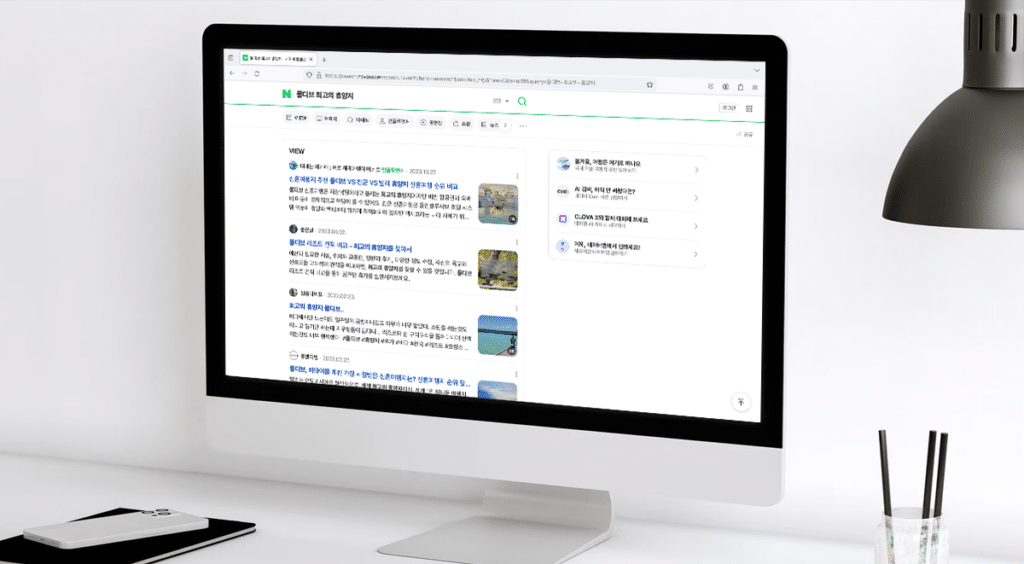
Naver holds most of the market share for search engines in Korea, which calls for an SEO approach. Unlike Google’s algorithm, which heavily relies on backlinks and website reputation, Naver places importance on user-generated content and its platforms, such as Naver Blog, Naver Post, and Naver Café.
Hence, achieving success with SEO on Naver goes beyond optimizing your website. It involves establishing a presence across various channels offered by Naver. Additionally, staying up to date with content is vital as Navers’ algorithm prioritizes posts or updates in its search rankings.
Keyword optimization also plays a role in Naver SEO. Choosing the keywords can enhance the visibility of your content on the platform. However, unlike Google, where keyword searches yield results from sources, most keyword searches on Naver primarily display results from its media. Therefore, incorporating your keyword strategy across services provided by Naver becomes essential.
Mastering SEO in Daum
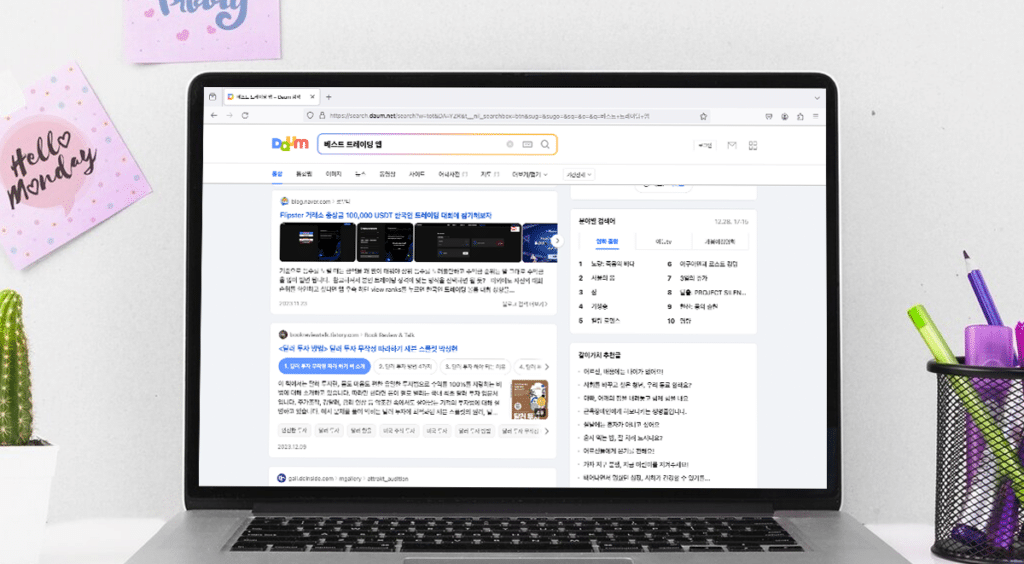
While Naver may have the larger market share, Daum still holds importance in the Korean search engine market; similar to Naver, Daum also values user-generated content and platforms. To create an SEO strategy for Daum, it is crucial to focus on producing content that resonates with the audience and culture.
One specific platform that deserves attention on Daum is Daum Café—a community popular among Korean internet users. Establishing a presence on Daum Café and utilizing it for SEO purposes can significantly enhance your visibility in Daum’s search results.
Furthermore, it’s important to note that Daum prioritizes Korean language content, which might pose a challenge for businesses. However, this presents an opportunity well. Translating your content into Korean or creating content in Korean can significantly increase your chances of achieving rankings on Daum.
A Unified Approach
Understanding the unique requirements of both Naver and Daum is vital for successful SEO in the Korean market. Developing a comprehensive and unified SEO approach that considers these factors is essential. The primary focus should be integrating your brand and content within the ecosystem rather than solely promoting an individual website.
Also, keep in mind that SEO goes beyond driving traffic. It involves attracting the kind of traffic. Ensure that your content and keywords align with your brand’s offerings and the interests of your target audience.
What’s important to remember? SEO is about understanding local nuances and customizing your strategies accordingly in the market. It’s about engaging with the audience using their platforms and connecting with them in their language—whether spoken or digital. By mastering this approach, your brand will thrive in the captivating digital market.
Winning with PPC: Strategies for Naver, Daum, Kakao, and Coupang

In the realm of marketing, Pay-per-click (PPC) advertising plays a role in gaining immediate visibility and achieving accelerated results. When combined with SEO strategies, PPC campaigns have the power to enhance a brand’s presence and engage customers significantly. To navigate the online market successfully and create effective PPC campaigns, it is important to understand the unique characteristics of its dominant platforms.
Navigating PPC in Naver
As South Korea’s leading search engine, Naver offers advertising services tailored to businesses of all sizes. One of its PPC advertising models is called ‘Power Link’ or Naver Search Ads. These ads appear at the top of search engine results pages, ensuring visibility and attracting clicks. With keyword selection and targeting based on location and demographics, businesses can maximize their return on ad spending.
Naver also provides a PPC solution through its Naver Shopping platform, which is particularly beneficial for businesses selling physical products. By displaying your PPC ads alongside product search results, you can effectively guide customers to your offerings, driving traffic and encouraging conversions.
Mastering PPC in Daum
Daum also holds a key position in the digital market. Daum PPC ads, called ‘Click Choice,’ appear in search results like Naver Power Link ads. Although Daum has a user base, it caters to a demographic that niche businesses can tap into. To create a PPC campaign on Daum, you must conduct keyword research, create ads, and allocate your budget efficiently. Additionally, it’s worth exploring Daum’s integrated platforms, such as Daum Cafe, to expand your reach.
Leveraging PPC in KakaoTalk
KakaoTalk – South Korea’s most popular messaging app – offers a unique and powerful platform for PPC campaigns. With its large user base, mobile-focused interface, and diverse features, advertising on KakaoTalk can yield results. Businesses can utilize ad formats, including display ads, Kakao Channel ads, and shopping ads to capture users’ attention. Leveraging KakaoTalks user data enables targeted campaigns that reach the right audience at the right time.
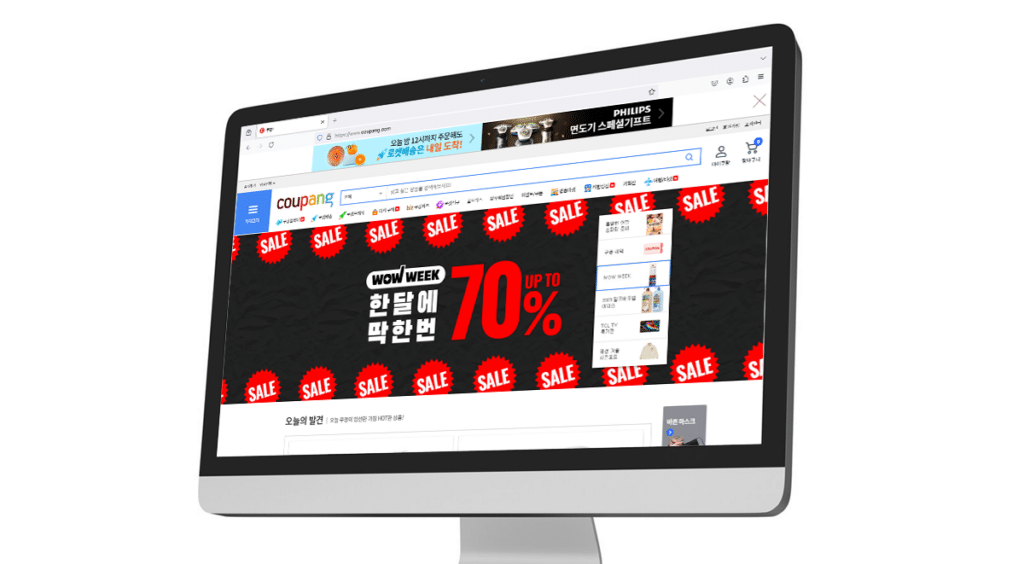
Exploring PPC in Coupang
Last, certainly not least, is Coupang – the ‘Amazon of South Korea’ which provides ground for PPC campaigns. As an e-commerce platform, Coupang goes beyond search. Offers a wide range of online shopping opportunities. By advertising on Coupang, you can directly showcase your products to customers, increasing sales and better brand recognition. Korean consumers particularly appreciate Coupang’s Rocket Delivery service, which ensures efficient product delivery. Linking your pay-per-click (PPC) ads to products through this service can make your ads more appealing.
Each platform requires an approach to PPC advertising in South Korea; understanding each forum’s features and user behaviors is crucial to optimizing your PPC strategy accordingly. By customizing your approach, you will be well-equipped to maximize click-through rates, generate traffic, and stand out from competitors in the digital market. Remember that an effective PPC strategy is not rigid but adaptable. It evolves along with changing user trends and business objectives.
Amplifying Engagement via Korean Social Media
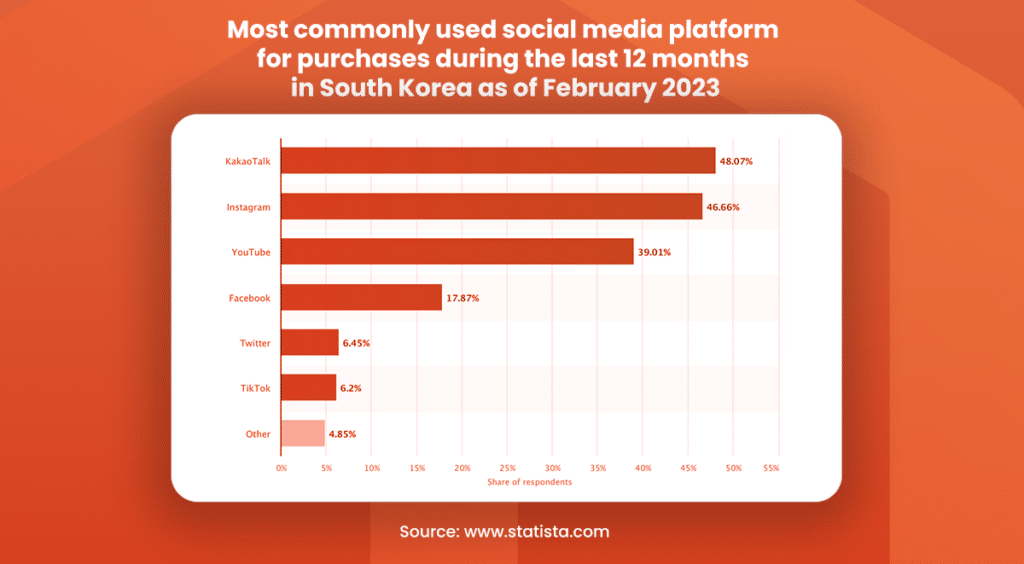
Social media platforms play a key role in connecting with audiences in South Korea. They provide a means to engage with consumers, establish connections, and foster lasting relationships.
One platform that holds popularity in South Korea is KakaoStory, which seamlessly integrates with KakaoTalk. It enables users to share stories, images, and videos. For marketers, KakaoStory presents an opportunity to convey brand narratives, share captivating content, and create interactive advertising campaigns that reach millions of users.
Facebook also holds a position in the social media landscape of Korea. While it may not dominate like Naver or KakaoTalk, it remains widely used. Offers promotional opportunities for businesses. Facebook ads allow precise targeting of demographics, while its robust analytical tools provide insights into user behavior.
Finally, we cannot ignore the impact of TikTok, a short-form video platform that has gained massive popularity worldwide, including in South Korea. Its distinctive format enables businesses to unleash their creativity, generate captivating content, and leverage trends. With its rise in popularity among the younger demographic, businesses have an incredible chance to enhance brand visibility and connect with an audience segment that remains largely untapped.
When devising a social media marketing strategy for South Korea, it is crucial to consider the behaviors and preferences of Korean consumers. Develop content that connects with people, encourages engagement, and provides information. Keep in mind that, in today’s era, active participation is the key to success in media. The more your audience interacts with your content, the more likely it is that it will be shared and seen by an audience. Establish a presence for your brand on these platforms, engage with your audience, and let social media empower your business growth in the market.
Harnessing the K-Pop Influence: Rise of Influencer Marketing
As we explore deeper into the marketing realm in Korea, it is impossible to ignore the impact of K-pop culture and influencer marketing. The global phenomenon known as Hallyu, or the Korean wave driven by K-pop music and Korean dramas, has genuinely shaped Korea’s image on a scale. Marketers can leverage this popularity to enhance their campaigns and connect with an audience.

When discussing K-pop, it’s impossible not to mention BTS, considered the crown jewel of this genre. With its dedicated fan base spread across the globe, BTS is influential in the marketing world. Many brands seek collaborations with K-pop idols or groups to tap into this power for their campaigns. For instance, Hyundai partnered with BTS to promote their eco-vehicle line, increasing brand recognition and sales.
Beyond the glitz and glamor associated with K-pop, the blog influencer community is another influential community within the landscape. These individuals have a rapport with their followers. They are often perceived as more relatable and trustworthy compared to traditional celebrities. Brands can capitalize on this trust and authenticity by collaborating with influencers who align well with their brand values. Such collaborations can lead to visibility, improved brand reputation, and drive sales.
When considering influencer marketing platforms like “Treasure Hunter,” it’s important to note their significance. These platforms facilitate connections between influencers and brands, enabling efficient influencer marketing campaigns.
However, achieving success in influencer marketing goes beyond finding an influencer and forming a partnership. It entails identifying the match for your brand—the influencer whose image, tone, and audience align with your brand vision and target demographic. It involves crafting a narrative that seamlessly merges your brand with the influencer.
Whether it’s harnessing the star power of K-pop or leveraging the bonds of trust built by influencers, incorporating these elements can profoundly impact your Korean digital marketing strategy. With this approach, they can serve as a catalyst that propels your brand onto the stage from within Korea’s heartland.
Viral Giveaway Campaigns: A Strategic Approach in the Korean Market

The digital marketing scene in South Korea is dynamic and always changing, providing ways to connect with audiences. One effective strategy that has gained popularity is the use of campaigns. These campaigns leverage social media platforms and the power of word-of-mouth marketing to create excitement, increase brand visibility, and attract customers.
Viral giveaway campaigns typically involve a brand offering prizes or a collection of prizes. Participants can win these prizes by completing actions like sharing a post following the brand’s social media account or tagging friends. These actions help spread the campaign, allowing the brand to reach an audience beyond its immediate network.
Now, let’s explore the elements of a viral giveaway campaign.
Choosing the Right Platform
Selecting the platform for your giveaway campaign depends on where your target audience is most active. For example, if your target demographic is highly engaged on Instagram, it would be a platform for your campaign. Instagram’s focus on visuals and features like sharing posts on stories make it a perfect fit for campaigns.
Prize Selection
The centerpiece of a campaign lies in offering an enticing prize. The incentive for participation should be enticing enough to motivate people. It could range from items or a special edition product to an all-expenses paid experience related to your brand. It should not be limited to one big prize but your giveaway should offer a few smaller gifts for the participants. It could be gift vouchers or discounts that are alluring to the target audience. This would make your giveaway more appealing to a larger number of people.
Establishing the Guidelines
The rules for the giveaway should be straightforward, easy to understand, and designed to encourage engagement. You could ask participants to follow your brand like the post, tag friends in the comments, and share the post on their story using a hashtag. These actions are intended to increase visibility and spread the message to an audience.
An Example of a Campaign

Saastronautics, a SaaS startup launchpad, partnered with Inquivix for a one-month giveaway. Utilizing a well-designed landing page, social media ads, and strategic emails in South Korea, the campaign garnered 99,544 visits, 99.79% user interaction, and 7,000+ leads. Timed during Black Friday, it capitalized on heightened audience attention. The prize strategy, offering relevant lifetime deals, led to increased revenue and exceeded expectations. Inquivix’s efficient approach showcased the power of strategic collaboration in boosting brand awareness and customer engagement for Saastronautics. For the complete case study, click here.
When planned and executed effectively, viral giveaway campaigns can be a strategy in your digital marketing efforts. This approach can help boost your brand’s visibility and facilitate engaging interactions with customers in this dynamic market.
Content is King: Tailoring Content Marketing Strategies for Korea
Content marketing holds the potential to captivate your audience, foster trust, and establish your brand as a figure within your industry. However, when it comes to content marketing in South Korea, the significance of “context” cannot be overstated. It is crucial to grasp the culture, trends, and user preferences to create content that deeply resonates with your target audience.

In South Korea, Naver Blog stands out as a platform for content marketing. Brands can leverage this platform to share engaging content ranging from product guides and how-to articles to pieces about the industry. Given Naver’s search algorithm, optimized content on Naver Blog can significantly enhance your visibility in search engine results.
When delving into content marketing in Korea, video content emerges as an element. Platforms like YouTube and Naver TV enjoy popularity across the country; in fact, Korea boasts one of the highest rates of YouTube usage globally. Utilizing these platforms allows you to share videos that are both entertaining and informative while encouraging sharing among users. Remember to optimize video titles, descriptions, and tags with keywords for search visibility.
Engaging audiences through storytelling proves highly effective in forging connections. Whether you want to share the story of your brand or create a narrative about your products, storytelling has the power to evoke emotions and build a connection between your brand and customers.
Moreover, time-interactive content is becoming increasingly popular in Korea. Platforms like Instagram, YouTube, and Naver offer live streaming options, allowing you to directly engage with your audience, address their queries, and showcase your products in time.
To develop a content marketing strategy in South Korea, it’s crucial to have an understanding of local digital behaviors and preferences. By crafting content that’s culturally relevant and contextually accurate, you can effectively capture the attention of Korean audiences and make a lasting impact.
E-commerce as a Marketing Medium: Gmarket, Coupang, and 11st
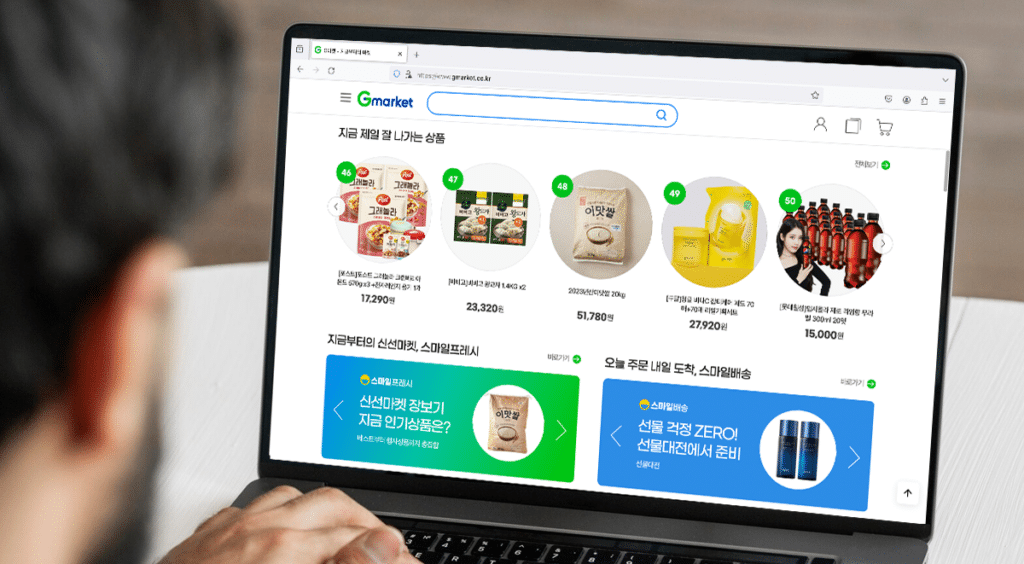
In this era, e-commerce has gone beyond being a sales channel and has now become a powerful tool for marketing. In South Korea, platforms like Gmarket, Coupang, and 11st have completely transformed the way people shop and engage with brands. These platforms provide businesses with avenues to market their products and boost their visibility.
Gmarket, which is owned by eBay, stands as one of the retail platforms in South Korea. Offering a range of products across categories, Gmarket appeals to a diverse consumer base. Businesses can effectively leverage Gmarket to promote their products through deals or discounts, ultimately driving sales and increasing brand recognition.
Coupang is another player in the e-commerce market. Its ‘Rocket Delivery’ promise has made it immensely popular among consumers due to its reliable service. Apart from selling products, Coupang provides businesses with a platform for advertising. Companies can choose paid promotions on Coupang to enhance their visibility and reach customers who are currently browsing products.
Lastly, 11st holds a share of the e-commerce market. It offers opportunities for businesses ranging from selling products and services to running events. As marketers, you can also make use of the product review sections on 11st to interact with customers and improve your brand reputation.
By incorporating these platforms into your marketing strategy you can connect with consumers directly and create a more holistic approach. It’s not about selling products or services; it’s about building relationships with customers, understanding their preferences, and tailoring your marketing strategies and offerings accordingly. With this approach, e-commerce platforms can be a tool for establishing a strong brand presence in the Korean market.
Embracing the Future: The Next Steps in the Korean Digital Journey

As we come to the end of our in-depth exploration into the realm of digital marketing, we emerge with a treasure trove of valuable insights and strategies tailored specifically to the unique characteristics of this thriving market. From the prominence of platforms such as Naver and Daum to the intricacies of SEO and PPC in Korea and even considering the influence of K-pop and influencer marketing, it becomes evident that the landscape of digital marketing is a dynamic ecosystem that requires a customized approach.
Nevertheless, it’s important to note that these strategies should not be treated as a one-size-fits-all solution. They serve as a foundation. They must be adapted and fine-tuned according to your brand’s specific requirements, objectives, and target audience. By having an understanding of market dynamics and adopting an approach that can adapt to ever-evolving digital trends, your brand can effectively connect with and resonate among South Koreans.
This journey through the world of marketing not only showcases its diversity and vibrancy but also highlights the immense opportunities it offers. The true power lies not in comprehending these insights but in their application. Implement these tactics closely, monitor their impact, and adjust your strategy accordingly.
As your brand delves into and expands within the changing digital market, it’s important to keep in mind that effective marketing revolves around establishing meaningful connections. These connections are built upon comprehension, trust, and a reciprocal exchange of value. Use this guide as your navigation tool as you embark on your journey into the market, allowing the digital landscape to guide your brand toward horizons.
FAQs
Leveraging K-pop and influencers can significantly boost your brand’s visibility and appeal in the Korean market. The immense popularity of K-pop, exemplified by bands like BTS, and the impact of influencers can be harnessed through collaborations and endorsements. However, it’s important to align your brand organically with these influencers to ensure authenticity. Find influencers who have a connection to your product or service, whose image and audience align with your brand vision, and create campaigns that authentically blend your brand with their content. This could involve creating co-branded products, featuring them in ads, or having them promote your brand on their social media platforms. The crucial factor here is authenticity and organic alignment between the brand and the influencer or K-pop group.
South Korea has a unique digital ecosystem where international platforms like Google and Facebook do not enjoy the same dominance as in other countries. Instead, homegrown platforms like Naver and Daum take the lead. These platforms boast a vast and engaged user base, making them critical to reach the Korean audience effectively. Additionally, they have unique algorithms and features that favor locally optimized content and user-generated content. Hence, a digital marketing strategy tailored explicitly for Naver and Daum can significantly enhance visibility, customer engagement, and, ultimately, conversions in the Korean market.
